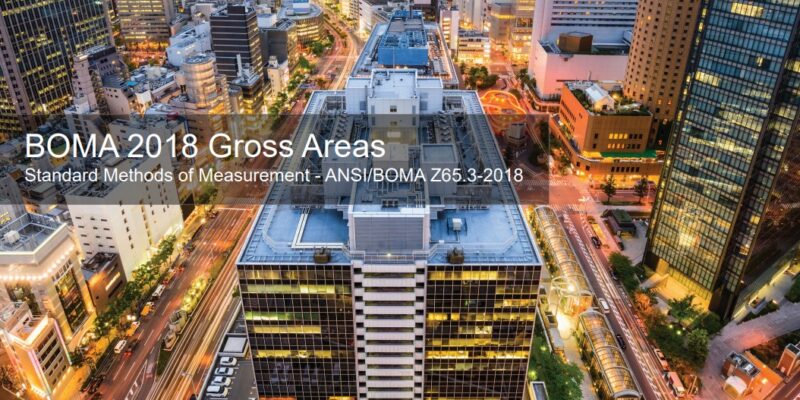Accuracy counts in the real estate industry. Precise measurements serve as the foundation for all transactions, leases, and property assessments. Let us introduce you to BOMA Square Footage, a phrase that is sometimes obscured in industry parlance yet bears great significance. We will dispel the myths surrounding BOMA Square Footage and clarify its definition, standards, and real-world uses in this blog article. Come along as Measure Up Corp. takes you through an important facet of real estate measurement.
Understanding BOMA International
Let’s first familiarize ourselves with BOMA International before diving into the details of BOMA Square Footage. The goal of the internationally renowned Building Owners and Managers Association (BOMA) is to further the commercial real estate sector. Establishing industry standards has been a driving force behind BOMA, which has a distinct objective and a long history.
BOMA Standards
A noteworthy accomplishment of BOMA is its collection of measurement guidelines. These guidelines offer a dependable and uniform way to compute different kinds of spaces inside a structure. Office buildings (BOMA 2017) and industrial buildings (BOMA 2012) are subject to different BOMA requirements. Accurate measurements of usable and rentable square footage are based on these standards.
The Components of BOMA Square Footage
To understand BOMA Square Footage, we must break it down into its essential components:
Rentable Square Footage (RSF)
RSF represents the area within a building that can be leased to tenants. It includes the tenant’s usable space plus a portion of common areas.
Usable Square Footage (USF)
USF is the actual space a tenant occupies exclusively within their premises. It excludes common areas.
Common Area Factor (CAF)
The CAF is the ratio of common areas shared among tenants. It is used to calculate the RSF from the USF.
Load Factor (Loss Factor)
The load factor accounts for shared spaces such as corridors and restrooms, which are allocated to tenants in the RSF calculation.
Building Efficiency Factor (BEF)
BEF represents the usable space within a building after considering the load factor.
Calculating BOMA Square Footage
The BOMA Square Footage is derived by applying these components in a standardized manner, ensuring consistency in measurements across the industry.
Why BOMA Square Footage Matters
Understanding BOMA Square Footage is crucial for various stakeholders in the real estate sector:
Benefits for Property Owners and Managers
Accurate measurements are the cornerstone of lease agreements, enabling property owners and managers to maximize space utilization and rental income.
Benefits for Tenants
Tenants benefit from transparent and fair lease agreements based on precise measurements, ensuring they pay only for the space they occupy.
Impact on Lease Negotiations
BOMA Square Footage can greatly influence lease negotiations, making it essential for both landlords and tenants to be well-versed in these standards.
Compliance with Regulations
Many municipalities and jurisdictions require compliance with BOMA standards, making them an essential consideration for property owners.
Common BOMA Square Footage Misconceptions
Despite its importance, BOMA Square Footage is often shrouded in misconceptions. Let’s debunk some of the common myths:
Myths and Misunderstandings
We’ll clarify misconceptions like the belief that all square footage measurements are created equal.
BOMA Square Footage and Technology
As technology continues to shape the real estate industry, BOMA Square Footage is not immune to innovation.
Role of Technology in BOMA Measurement
Advanced software and measurement tools have made it easier than ever to calculate BOMA Square Footage accurately.
Future Trends in BOMA Measurement Technology
We’ll explore how technology is poised to further revolutionize BOMA measurements in the future.
Practical Applications and Examples
Real-life scenarios and case studies will illustrate the practical application of BOMA Square Footage, showcasing its impact on real estate transactions.
BOMA Square Footage Certification
For those seeking expertise in BOMA Square Footage, certification can be a valuable pursuit.
Becoming a BOMA Certified Measurement Professional
We’ll highlight the process of becoming a certified professional in BOMA measurements.
Benefits of Certification
Certification can open doors to new career opportunities and demonstrate your commitment to accuracy in real estate measurement.
Conclusion
More than ever, accuracy is crucial in the ever-changing real estate industry. The Building Owners and Managers Association created BOMA Square Footage, which gives the sector uniform measurements to support transactions, leases, and property appraisals. To help you through every step of the real estate measuring process, keep in mind that Measure Up Corp. is available to you. Adopt BOMA Square Footage to ensure honesty and openness in the real estate industry in the future.

